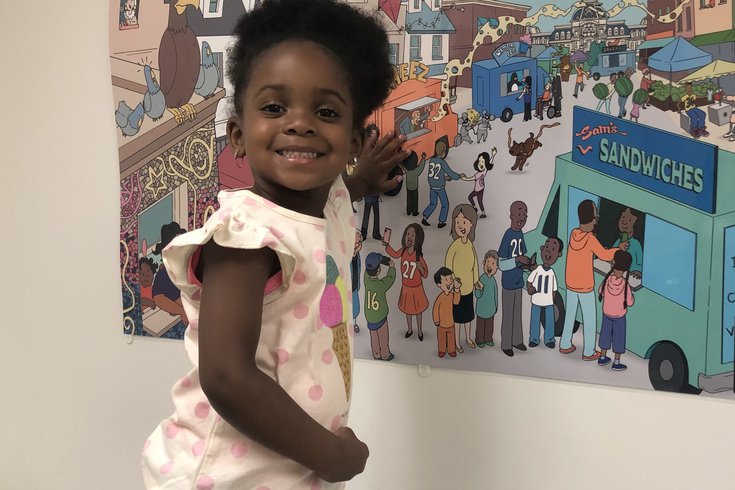
July 23, 2021
 Courtesy/Children's Hospital of Philadelphia
Courtesy/Children's Hospital of Philadelphia
CHOP's new Picture This! program uses murals mimicking large storybook pages to foster creativity and conversations as families wait to be seen at the Karabots Pediatric Care Center in West Philly.
Colorful and interactive murals now decorate the walls of the exam rooms at the Nicholas and Athena Karabots Pediatric Care Center in West Philadelphia in hopes of inspiring creativity and teachable moments.
In the future, more facilities within the Children's Hospital of Philadelphia network will be adorned with murals as part of the health system's Picture This! project.
The murals are designed to serve as both an assessment tool for pediatricians and a way to stimulate conversations within families and foster children's imaginations. Among the issues the murals address: bullying, safe street habits and healthy relationships.
Each mural has a QR code that links to an interactive web-based portal that guides families through the mural with age-appropriate prompts, including seek-and-find activities. Additionally, Philly-themed illustrations, including a soft pretzel stand and the Liberty Bell, are hidden within the murals.
A team of CHOP physicians, researchers, nurses, child life specialists and hospital administrators worked with artists to create murals that look like storybook pages brought to life.
"Our goal was to reimagine our medical waiting spaces, creating more opportunities to model the types of interactions that help children thrive," said Dr. Danielle Erkoboni, a pediatrician at the Karabots Primary Care Center in Norristown and a faculty member in CHOP's PolicyLab.
"As a pediatrician, I also use the murals to assess a child's development, alongside the books we provide through Reach Out and Read. ... We're very excited to bring images like those in the books to the walls of the primary care clinic, ensuring that learning through play is always visible throughout the space."
The American Academy of Pediatrics supports play as a way to reduce stress, build relationships and foster learning in young children. The Picture This! project is funded by a William Penn Foundation grant.
"Having the murals located in individual exam rooms provides a safe, individualized way for families to have fun and learn while waiting to see their care providers," Erkoboni said. "Even more, our evaluation of the murals has shown that they create the types of conversation that help a child's brain grow and develop even more than the standard exam or waiting room."
In a pilot study, CHOP researchers observed almost 100 families as they waited in three types of waiting spaces — a standard waiting space, one with a mural and one with a play area that encouraged physical play.
They found that the waiting space with a mural stimulated conversations significantly more often than the other types. The conversations were also longer and richer in detail, they reported.
Instead of painting the murals directly on the walls, they were created as large posters that are secured to the walls. CHOP made this decision to create easy-to-clean posters in response to the COVID-19 pandemic.